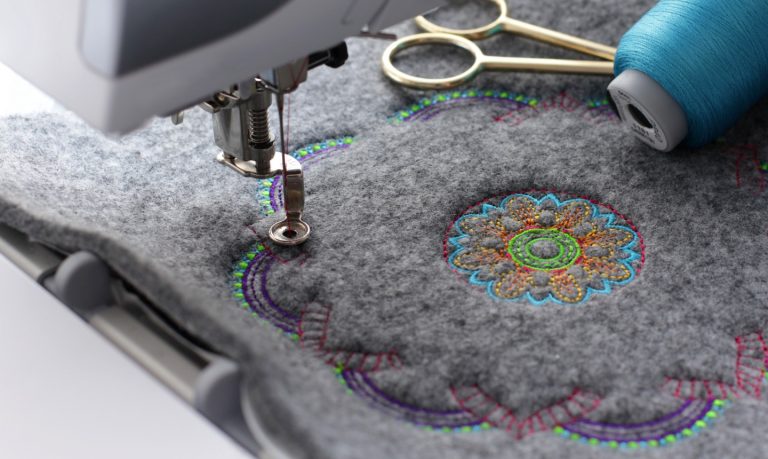Professional Digitizing for Embroidery: High-Quality Designs
Professional Digitizing for Embroidery: High-Quality Designs
Blog Article
Grasping the Embroidery Digitizing Process: Your Ultimate Overview
Embroidery digitizing is a meticulous craft that needs precision and experience to translate intricate layouts right into electronic layouts for equipment needlework. As craftsmens begin on this journey to master the embroidery digitizing process, a comprehensive understanding of the essentials establishes the structure for excellence.

Understanding Embroidery Digitizing Basics
Embroidery digitizing basics form the foundation whereupon detailed designs are translated right into machine-readable layouts for specific sewing. This first action in the needlework digitizing procedure is critical for ensuring that the last stitched item is a loyal depiction of the initial layout. Recognizing needlework digitizing essentials entails comprehending vital principles such as stitch kinds, sew instructions, thickness, padding, and draw settlement.
Sew kinds play a crucial duty in figuring out the visual and textural result of the embroidered design. By picking the appropriate stitch kind, whether it be satin, fill, or running stitch, digitizers can attain the wanted impact and improve the overall top quality of the needlework. Furthermore, stitch instructions influences the flow and measurement of the layout, while density identifies the spacing and coverage of the stitches.
In addition, rug stitching provides security to the layout by protecting the material and avoiding distortion during the needlework process. Draw settlement is one more essential factor to consider to neutralize the natural propensity of material to contract when sewn. Grasping these needlework digitizing fundamentals is fundamental for developing professional-quality stitched products.
Choosing the Right Digitizing Software Application
Picking the suitable digitizing software program is a crucial choice that significantly affects the performance and quality of the embroidery digitizing procedure. Digitizing for Embroidery. When choosing the ideal digitizing software, it is vital to consider elements such as the complexity of layouts you intend to create, the user-friendliness of the software, the level of consumer assistance offered, and the compatibility with your embroidery device
There are various digitizing software application choices readily available in the market, ranging from basic programs for novices to innovative software program for professional digitizers. Some popular choices include Wilcom EmbroideryStudio, Hatch Embroidery Software, and PulseID. These software application bundles use a wide variety of devices and attributes to aid you produce complex styles effortlessly.
Before deciding, it is advisable to discover the various software application choices through free tests or demonstrations to identify which one best suits your demands. Furthermore, reading reviews and looking for suggestions from skilled digitizers can provide beneficial understandings into the strengths and weak points of each software application package (Digitizing for Embroidery). By meticulously examining your requirements and contrasting the functions of different digitizing software program, you can make an educated choice that boosts your embroidery digitizing operations
Digitizing Devices and Techniques

Optimizing Layout Setup for Needlework
Grasping the ins and outs of style setups is essential in accomplishing ideal lead to the embroidery digitizing process, building upon the structure laid by recognizing digitizing devices and strategies. When maximizing layout setups for needlework, it is vital to take into consideration factors such as stitch type, thickness, padding, draw settlement, and enrollment. Sew kind choice affects the overall look and feeling of the layout, with choices like satin, fill, and running stitches providing different appearances and results. Thickness refers to the spacing and thickness of stitches, influencing the style's protection and resilience. Proper padding stitching provides security and protects against material distortion, especially for intricate layouts or on stretchy materials. Draw payment adjusts for material stretch during sewing, making sure accurate layout replication. Registration settings align various elements of the style accurately, keeping overall style integrity. By fine-tuning these layout settings, embroiderers can improve the quality and precision of their stitched developments.

Troubleshooting Common Digitizing Issues
When running into common digitizing concerns during the needlework process, it is vital to comprehend the origin triggers and apply effective services promptly. One typical issue is stitch density concerns, where stitches may be too dense, causing the textile to tighten, or as well sporadic, resulting in voids in the layout. Adjusting the stitch density setups in the digitizing software program can help fix this problem.
An additional constant challenge is thread breaks during the embroidery process. This can happen as a result of numerous factors such as incorrect tension settings, dull needles, or utilizing low-quality thread. Making sure correct upkeep of the needlework machine, including regular needle changes and tension adjustments, can reduce the occurrence of thread breaks.
Furthermore, style enrollment errors can lead to misaligned aspects within the embroidery style. Inspecting the style positioning in the digitizing software look these up application and making needed changes prior to sewing can assist in avoiding this issue. By dealing with these common digitizing issues promptly and effectively, you can guarantee a smoother embroidery process and premium completed products.
Final Thought
To conclude, understanding the needlework digitizing process requires a solid understanding of the essentials, the appropriate selection of software program, and understanding of tools and techniques. Optimizing layout setups and troubleshooting usual digitizing concerns are important action in ensuring high-grade needlework results. By following these actions carefully, one can accomplish precision and performance in the digitizing procedure.
Report this page